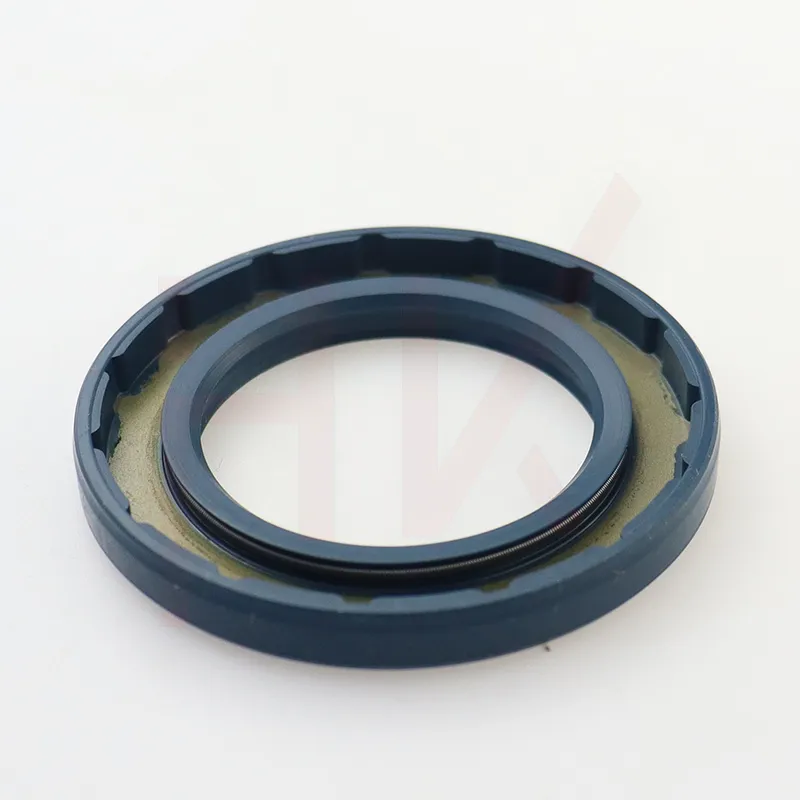Nov . 05, 2024 12:03 Back to list
oil seal for rotating shaft
Understanding Oil Seals for Rotating Shafts
Oil seals, also known as shaft seals, are crucial components in various machinery and automotive applications, designed to prevent the leakage of lubricants and the entry of contaminants into rotating machinery. These seals are essential for enhancing the efficiency and longevity of rotating shafts, which are integral to the functioning of many types of equipment, from engines to industrial machinery.
Function and Importance
The primary function of an oil seal is to retain the lubrication oil within the mechanical system while preventing dust, dirt, and other foreign particles from entering. This is particularly vital in environments where contaminants are commonplace, as even a small amount of dirt can lead to significant wear and tear on rotating components. Proper lubrication reduces friction, which minimizes heat generation, ultimately leading to enhanced performance and reduced energy consumption.
In rotating shafts, oil seals typically feature a flexible lip that makes contact with the shaft surface. This design creates a barrier that effectively holds lubricants in place while forming a seal that withstands pressure. Depending on the application, oil seals may also be designed to handle various temperatures, pressures, and speeds.
Types of Oil Seals
Oil seals come in various designs and materials, tailored to meet the specific needs of an application. Common types include
1. Lip Seals These are the most common type of oil seal, characterized by a flexible lip that ensures a tight fit against the rotating shaft. They are widely used in automotive applications and industrial machinery.
oil seal for rotating shaft

3. Mechanical Seals Often used in pumps, mechanical seals consist of two flat surfaces that create a seal when compressed. These are especially effective in high-pressure applications.
4. V-Rings These seals are designed to provide protection against contaminants while allowing for slight axial movement of the rotating shaft.
Material Selection
The choice of material for oil seals is critical, as it affects the seal's durability, resistance to wear and temperature, and compatibility with the lubricants used. Common materials include nitrile rubber (NBR), fluorocarbon (FKM), and silicone rubber. Each material has unique properties that make it suitable for specific environments, such as high temperatures or exposure to harsh chemicals.
Maintenance and Replacement
To ensure optimal performance, regular maintenance and inspections of oil seals are recommended. Signs of wear, such as oil leaks or unusual noises during operation, may indicate that an oil seal needs replacement. Timely maintenance can prevent further damage to the machinery and ensure that the equipment operates efficiently.
Conclusion
In summary, oil seals for rotating shafts are indispensable components that play a vital role in maintaining the operational efficiency and longevity of mechanical systems. With their ability to contain lubricants and block contaminants, these seals are key to ensuring reliable performance in various applications. Understanding their types, materials, and maintenance requirements can help in selecting the right oil seal, ultimately leading to better machinery performance and reduced operational costs. Whether in automotive engines or industrial equipment, the role of oil seals cannot be understated in today's technology-driven world.
-
The Trans-formative Journey of Wheel Hub Oil Seals
NewsJun.06,2025
-
Graphene-Enhanced Oil Seals: Revolutionizing High-Pressure Oil Sealing
NewsJun.06,2025
-
Future of Hydraulic Sealing: Advanced Intelligent TCN Oil Seals
NewsJun.06,2025
-
Don’t Let a Broken TCV Oil Seal Ruin Your Day
NewsJun.06,2025
-
Bio-Inspired Dust Seals for Better Sealing Performance
NewsJun.06,2025
-
Biodegradable and Sustainable Hydraulic Seal Materials
NewsJun.06,2025
-
Top Oil Seal Solutions for Your Industrial Needs
NewsMay.22,2025
Products categories
















